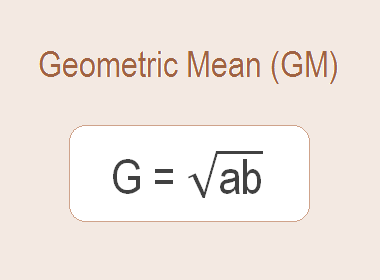
If three numbers a, b and c are in geometric progression GP, then the middle term b is known as the geometric mean (GM) between the other two. For example, 24, 12 and 6 are in GP, so 12 is the geometric mean between 24 and 6.
If any number of terms are in GP, then the terms between the
first and the last terms are known as the geometric
means between the first and the last. For example, 1, 2, 4, 8, 16, 32 are
in GP and 2, 4, 8, 16 are the geometric means between 1 and 32.
********************
10 Math Problems officially announces the release of Quick Math Solver and 10 Math Problems, Apps on Google Play Store for students around the world.
********************
********************
Geometric Mean Between Two Numbers
Let G be the geometric mean between two numbers a and b then a,
G, b are in GP.
Now by definition,

Example 1: Find the geometric mean between 2 and 8.
Solution:
Here,
The first term (a) = 2
Last term (b) = 8
Geometric mean (G) = ?
We know,

Geometric Means Between Two Numbers
Let x1, x2, … … …, xn1 be the n1
geometric means between a and b, then a, x1, x2, x3,
… … …, xn1, b are in GP. If r be the common ratio, then tn
= arn-1
As there are n1 + 2 terms in all i.e. n = n1
+ 2
or, b = arn1+2-1
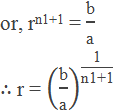
Now, the required geometric means are
x1 = ar
x2 = ar2
x3 = ar3
xn = arn
Note: The second term of the sequence is the first mean and the
third term is the second mean and so on.
Example 2: Insert 5 geometric mean between 81 and 3.
Solution:
Here,
The first term (a) = 81
The last term (b) = 3
No. of means (n1) = 5
Hence the common ratio,

Therefore, geometric means are:
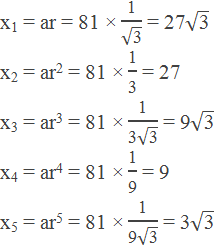
Example 3: If 4, p, q, - 1/16 are in GP, find p and q.
Solution:
Here,
First term (a) = 4
Last term (b) = - 1/16
n1 = no. of means = 2

Example 4: Two numbers are in ratio 16:1 and their GM is 16. Find the numbers.
Solution:
Let the two numbers be 16x and x and their GM is 16.
or, (16)2 = 16x × x
256 = 16x2
or, x2 = 16
or, x = ±4
When x = 4, the numbers are 4x and x i.e. 64 and 4.
When x = -4, the numbers are 4x and x i.e. -64 and -4.
Example 5: Find the number of GM’s inserted between 4 and 128, the ratio of
the first mean and the last mean is 1:8.
Solution:
Here,
The first term (a) = 4
The last term (b) = 128
Let the number of means = n
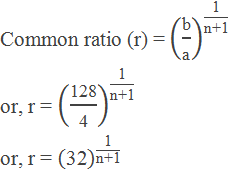
From the question, First mean : Last mean = 1 : 8
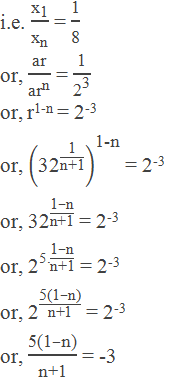
or, -5n + 3n = -3 – 5
or, -2n = -8
or, n = 4
Relation Between AM and GM of two Positive Numbers
Let a and b be two positive numbers and AM and GM be the
arithmetic mean and geometric mean between a and b respectively, then
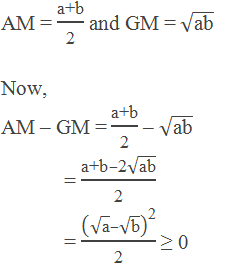
Hence, AM ≥ GM
Therefore the arithmetic mean between two positive numbers is
greater than or equal to their geometric mean.
Example 6: Find the two numbers whose AM is 25 and GM is 20.
Solution:
Let the two numbers be a and b, then
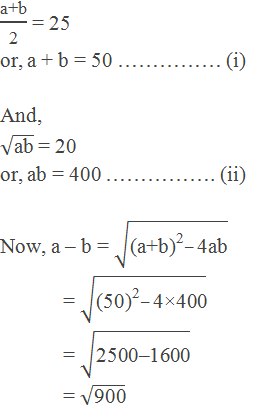
Solving equations (i) and (iii), we get
a = 40 and b = 10
Hence, the required numbers are 40 and 10.



0 comments: